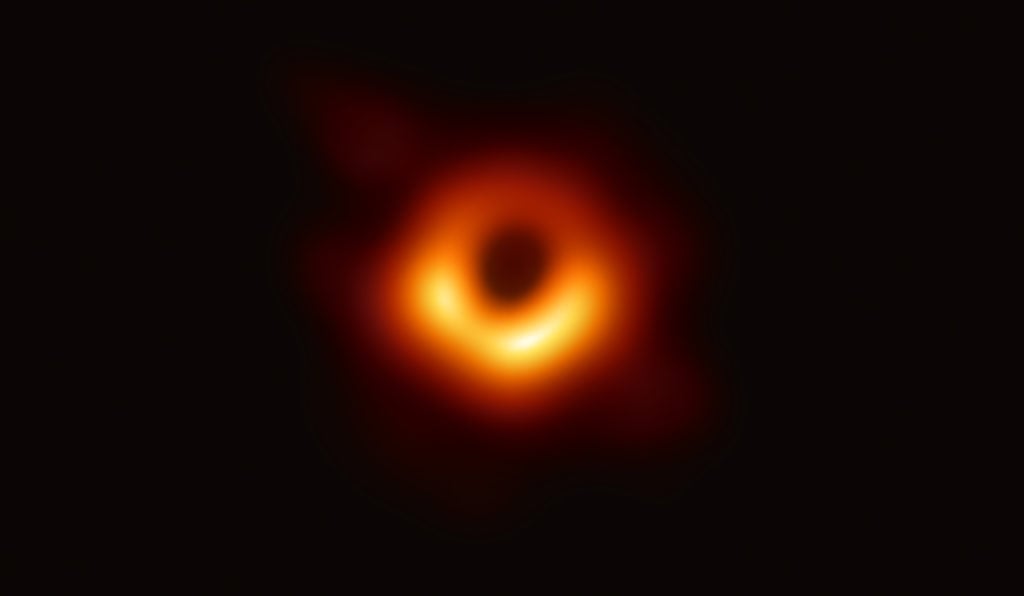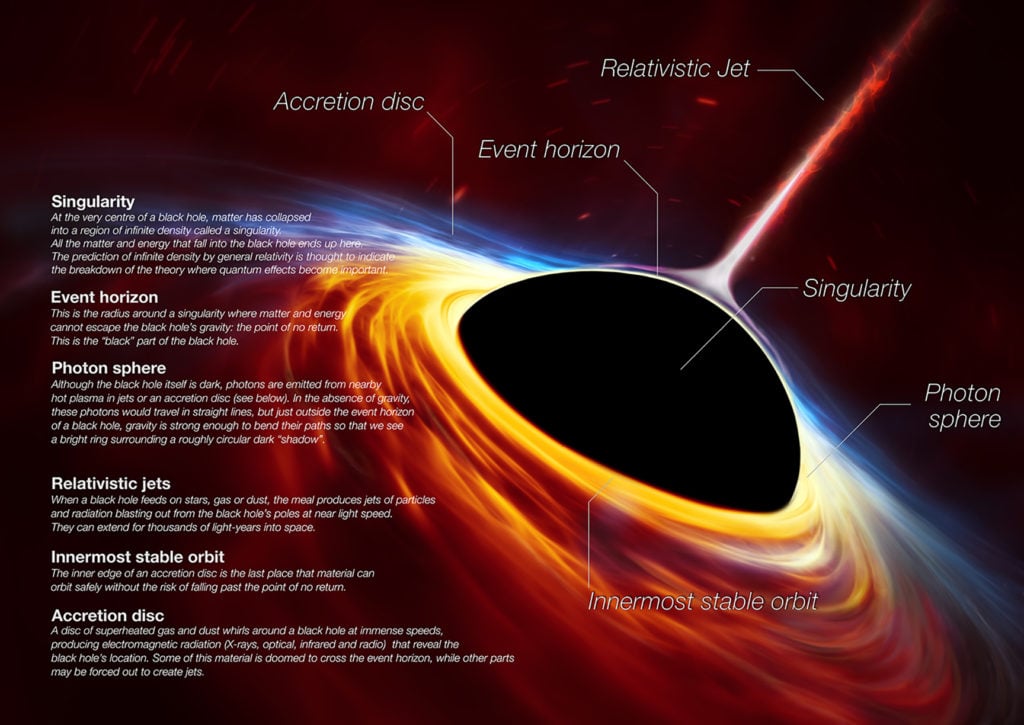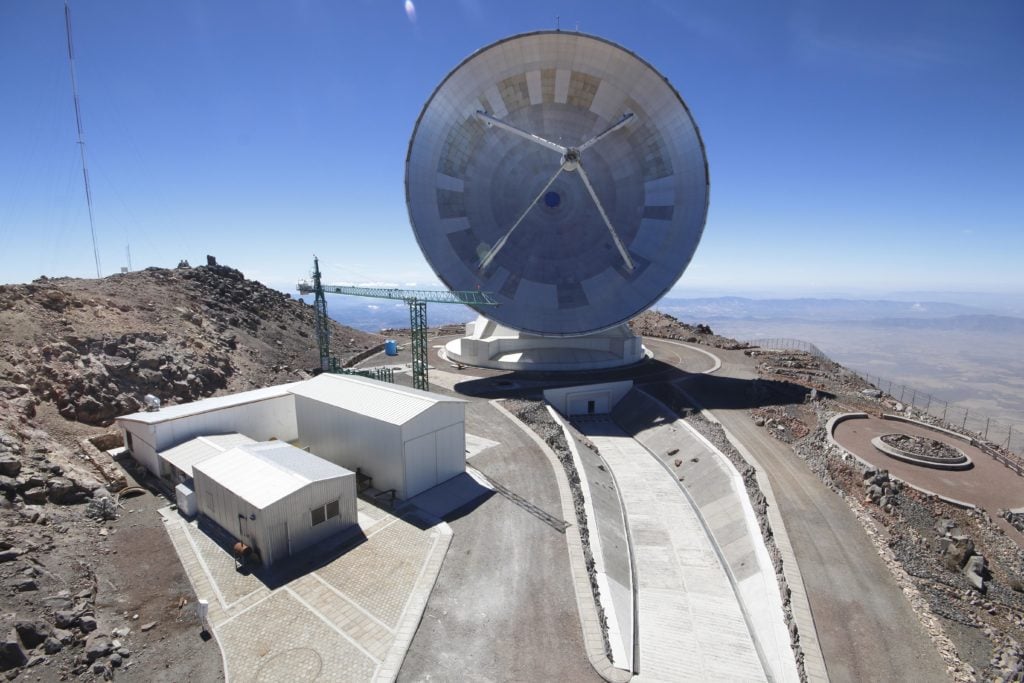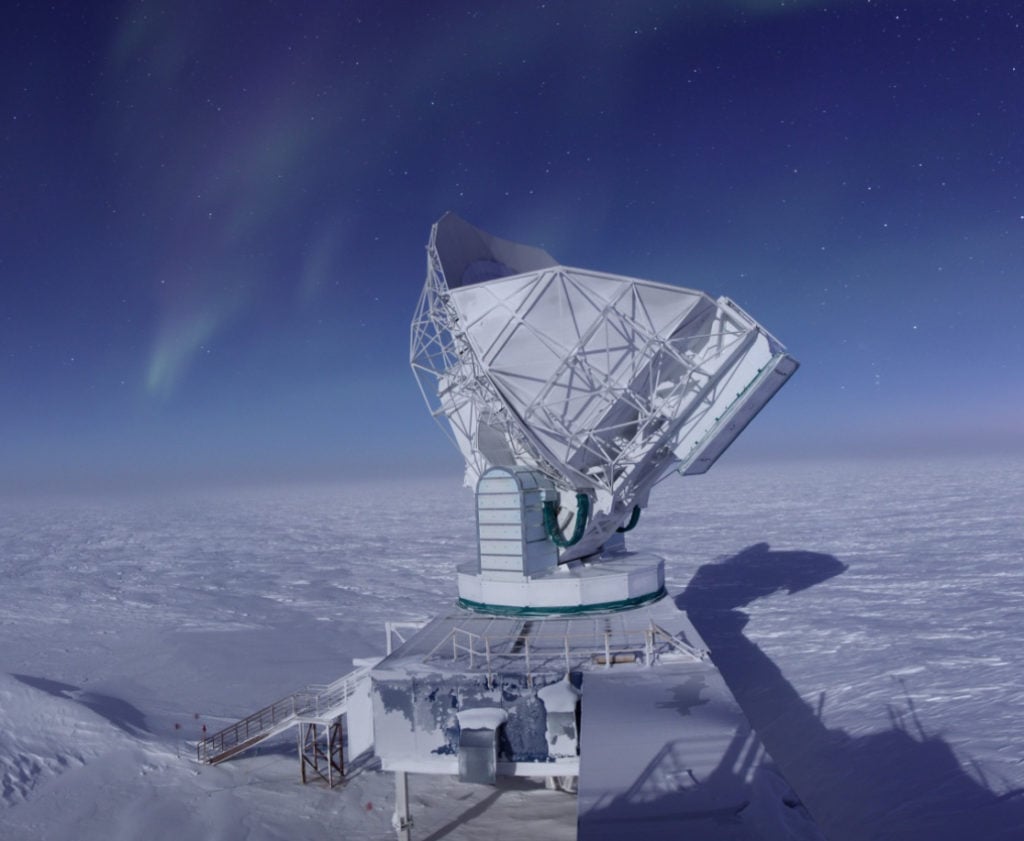Art World
‘It’s an Absolute Monster’: See How Astronomers Managed to Snap the First-Ever Photograph of a Black Hole
The Event Horizon Telescope project has done the unthinkable.

The Event Horizon Telescope project has done the unthinkable.

Humankind is one step closer to understanding one of the universe’s most enduring mysteries: the black hole. Once considered unobservable, black holes are dense fields of matter that create gravity fields so powerful that even rays of light cannot escape their grasp. But now, astronomers have taken a mind-blowing picture of the dark circular void surrounded by a ring of fiery light.
“We have seen what we thought was unseeable,” said project director Sheperd Doeleman, of the Harvard-Smithsonian Center for Astrophysics, in a statement. “We have seen and taken a picture of a black hole. This is an extraordinary scientific feat accomplished by a team of more than 200 researchers.”
The black hole looks so frightening and malevolent that the New York Times couldn’t help comparing it to the eye of Sauron, the demonic villain in J.R.R. Tolkien’s Lord of the Rings.
“For decades, we have studied how black holes swallow material and power the hearts of galaxies,” said Harvard University professor Ramesh Narayan, who worked on the project, in a statement. “To finally see a black hole in action, bending its nearby light into a bright ring, is a breathtaking confirmation that supermassive black holes exist and match the appearance expected from our simulations.”

This artist’s impression depicts a rapidly spinning supermassive black hole surrounded by an accretion disc. Image courtesy of Center for Astrophysics, Harvard & Smithsonian.
The image was published in a special edition of the Astrophysical Journal Letters and was revealed to the public at simultaneous press conferences held this morning in six cities around the world: Washington, Brussels, Santiago, Shanghai, Taipei, and Tokyo. It depicts the supermassive black hole, which is 24 million miles across, or about 6.5 billion times bigger than the sun, in the center of Messier 87, a supergiant elliptical galaxy in the constellation Virgo, a galaxy cluster some 55 million light years away.
“It is one of the heaviest black holes that we think exists,” Heino Falcke, a professor Radboud University in the Netherlands who first proposed the experiment back in 1993, told the BBC. “It is an absolute monster, the heavyweight champion of black holes in the universe.”

The Large Millimeter Telescope (LMT) in Mexico, operated jointly by the University of Massachusetts Amherst and Mexico’s Instituto Nacional de Astrofísica, Óptica y Electrónica, was one of the telescopes used by the Event Horizon Telescope project to capture the first image of a black hole. Photo courtesy of UMASS Amherst.
The Event Horizon Telescope project, which began more than 10 years ago, has also observed Sagittarius A*, a black hole in our own Milky Way galaxy that is 4.1 million times bigger than the sun and 26,000 lightyears away.
For its groundbreaking observations, the Event Horizon Telescope used eight ground-based radio telescopes, located in sites in Chile, Mexico, Spain, Hawaii, Arizona, and the Antarctic, essentially creating a virtual telescope the size of planet Earth. All observations were conducted simultaneously, synchronized through the use of precise atomic clocks.

The South Pole Telescope is one of eight ground-based radio telescopes that make up the Event Horizon Telescope array. Photo by Jason Gallicchio, courtesy of the University of Chicago.
Altogether, the project collected a mind-boggling 5,000 trillion bytes of data over two weeks. It was too much to send over the internet, so hundreds of hard drives were flown to a central processing center at the Max Planck Institute for Radio Astronomy and MIT Haystack Observatory in Massachusetts, where the data was initially processed by supercomputers. Four independent groups of scientists then used three different imaging methods to interpret it before the historic image was finalized.
A second round of observations was conducted in 2018, with additional telescopes joining the project in Greenland and France, as well as another Arizona site. Scientific researchers are currently analyzing that data.
What is actually captured in the first-of-its-kind image is the so-called event horizon, the point of no return that surrounds a black hole. It shows the light, superheated gases, and even stars being sucked into the hole, as well as the jets of super-charged particles that are being blasted away from the edge of the event horizon, barely escaping its inexorable pull.
“Black holes have sparked imaginations for decades,” said National Science Foundation director France Córdova in a statement. “They have exotic properties and are mysterious to us. Yet with more observations like this one they are yielding their secrets.”